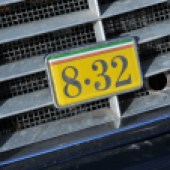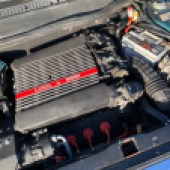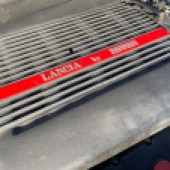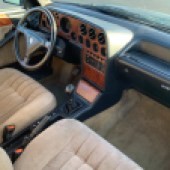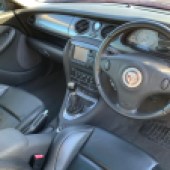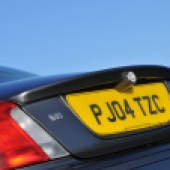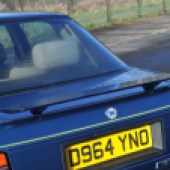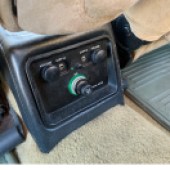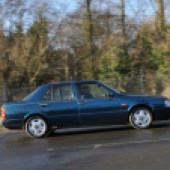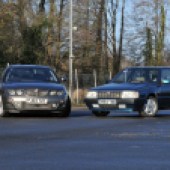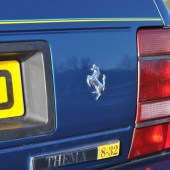The Ferrari-engined Lancia Thema 8.32 meets the Mustang-powered MG ZT 260 – with both estimated at £10,000 in Brightwells’ February 14 sale
Words and images: Paul Wager With thanks to: Brightwells Auctions
So you’re a car marque with an illustrious past and a proud history in upmarket sporting saloons, but you find yourself in the doldrums, needing something to jazz up your range of otherwise anonymous mid-range saloons. You already produce a turbo model but it needs something else to capture the imagination… something outrageous.
Obviously what you need is a V8, and no matter if you don’t have one of your own: just borrow one, preferably a design with a bit of kudos attached to it. In the case of Lancia, they went down the corridor and made an arrangement with fellow Fiat Group maker Ferrari to borrow the engine from the 328, while nearly 20 years later Rover struck a deal with Ford to use its Modular ‘Triton’ V8.
Both cars are scarce today but the Lancia is a real rarity, especially here in the UK – which explains why when we found both in the upcoming Brightwells sale, we jumped at the chance to sample them.

Lancia Thema 8.32: Lancia by Ferrari
The idea of creating a halo model for the Lancia Thema range by stuffing a Ferrari engine under the bonnet was both inspired and outrageous in the best Italian car-making tradition, but the surprise is how low-key the result was. Rather than an aggressive sports saloon the idea was to make a brisk luxury car, and even compared to BMW’s famously subtle E28 M5, the Thema 8.32 is low-key. You need to know your Lancias to spot the slightly more upright front grille, side skirts and discreet badging, that ‘8.32’ denoting the eight cylinders and 32 valves.
The 6×15-inch wheels are unique to the 8.32 but other than that it looks much like the Turbo IE at a glance. In fact, the effort to make the V8 Thema pass under the radar gave rise to possibly the best rear spoiler there’s ever been. Sitting flush with the bootlid when not in use, it’s all but invisible most of the time but sits on an extravagantly engineered mechanism which motors up and outwards at the twist of the right-hand column stalk.
Lancia reckoned at the time that the spoiler created useful extra downforce, but curiously it doesn’t deploy automatically at speed Corrado-style, but is controlled entirely manually.
The running gear too is engineered for smoothness rather than the Nordschleife. Lean on a wing corner and the car dips obligingly, the soft set-up making itself obvious as we manoeuvre the car out of its parking spot. Fiat Group was clearly serious about its ‘Lancia by Ferrari’ project and went to some trouble to adapt the 32-valve V8 for saloon car use, with some significant internal modifications.

Chief among these is the switch from the Ferrari’s 180° flat-plane crank to a 90° cross-plane design in the interests of refinement, while reducing the bore and stroke to 91x71mm gave a capacity of 2927cc.
Running Bosch’s KE3 Jetronic injection, the headline figure is 215bhp at 6750rpm on this pre-catalyst example with 210lb ft torque and 4500rpm; if these seem tame by today’s standards, let’s remember that the Thema was front-wheel drive, which makes a 0-60mph time of 7.2 seconds quite an achievement for a 1400kg car.
A new subframe fitted the V8 into the Thema’s engine bay surprisingly neatly, helped by the V8 also being used transversely in the Ferrari. The basic MacPherson strut layout of the Thema was retained, although front wishbones, links and anti-roll bar were all beefed up. UK-market cars received Lancia’s own adaptive damping, which used solenoids acting on the damping valves to offer a Sport or Automatic setting.
Reassuringly, the brakes were uprated for the 8.32, getting 11.2″ front discs and borrowing the 9.9″ rears from the Turbo, as well as Bosch ABS.
Unveiled in 1986, the 8.32 would remain in the line-up until the series 2 Thema disappeared in 1992, with a total of 3971 built. All were left-hand drive but Lancia UK did offer it in the UK where it retailed at an ambitious £37,500 – that’s £7000 more than the Audi Quattro and Jaguar XJ-S V12, £17,000 more than a Sapphire Cosworth and even two grand more than the BMW M5.
Enough of the tech though. What’s it like to drive? Simply brilliant is the short answer, an admittedly biased view from someone who loves ’80s Italian cars but who has also dabbled in M Power BMWs.

The 8.32 received a chintzy wood and Alcantara interior
The under-the-radar looks mean the chintzy alcantara interior decor complete with wood trimmed doors and dash comes as something of a shock, as does the cultured woofle from the V8, which defies expectations by firing on the first turn.
The Thema 8.32 was only made in manual five-speed form and the gearbox and clutch were apparently beefed up for V8 duties but feel no heavier than a regular Thema. The gearshift is typical ’80s saloon car with a longish throw and light movement but positive enough and the standard-fit Servotronic power steering makes it no harder to manoeuvre at parking speeds than a modern car.
Under gentle acceleration it feels very similar to the Turbo, the adaptive suspension switching into Sport mode below 3mph to reduce pitch in traffic but when more is demanded, the V8 is ready to oblige without the blown car’s lag. Impressively, traction is well controlled at lower revs, even on damp surfaces but as the V8 gets into its stride from 3000rpm, then full-throttle will see the front wheels start to scrabble.
Remember though, that this was the most powerful front-wheel drive car in the world at the time and considering it makes do without any electronic traction aids it’s really very respectable.
Push it hard in the corners and the gradually building understeer betrays the presence of the V8 ahead of the front axle line, but it’s all very predictable and confidence-inspiring. Road testers back in the day reckoned that if you persisted hard enough, the inside front tyre would start to smoke in a tight turn, but we’ll just take their word for that.
Full-bore standing starts in any case aren’t what the Thema 8.32 was all about: its forte was covering large European distances in comfort at high speeds with that softish suspension letting the kilometres tick gently past.
Which is something this particular example has done to great effect. Originally an Italian-market car, it’s been owned for many years by a noted motoring journalist and has travelled all over Europe on various assignments, the screen still bearing a press accreditation sticker from 2019.
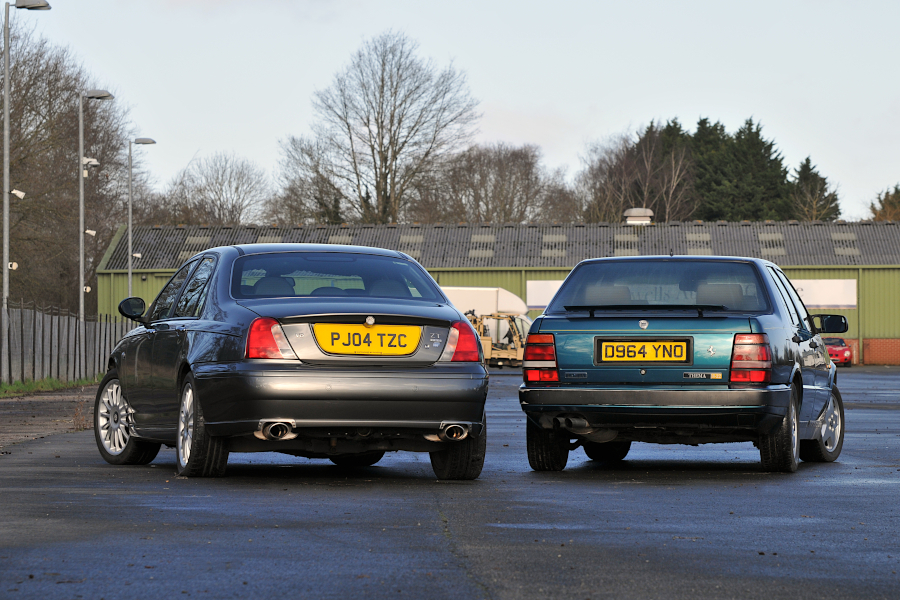
MG ZT 260:Rover V8 reborn
How does the Ferrari-engined Lancia compare to the same recipe produced by an increasingly desperate MG Rover in 2003?
Like Lancia, Rover went to some trouble to create its V8 saloon, but whereas Lancia’s budget was spent on modifying the engine itself, Rover pretty much bought in a ‘crate’ unit from Ford, with the cash going towards converting the MG ZT’s Rover 75 platform from front to rear-wheel drive.
It might sound ridiculous but in truth it was an easier task than it might appear, and probably no more crazy than Lancia re-engineering the crank phasing of the Maranello V8.
That Rover 75 platform had been engineered with extensive input from Rover’s then masters BMW and the Bavarians’ preference for bodyshell rigidity had ensured that the car had a beefy central tunnel. Beefy enough, as it turned out, to accommodate a propshaft. Despite this, the bodyshell still needed new floor pressings and modification to the bulkhead area to accommodate a longitudinal drivetrain and a new multi-link rear suspension.
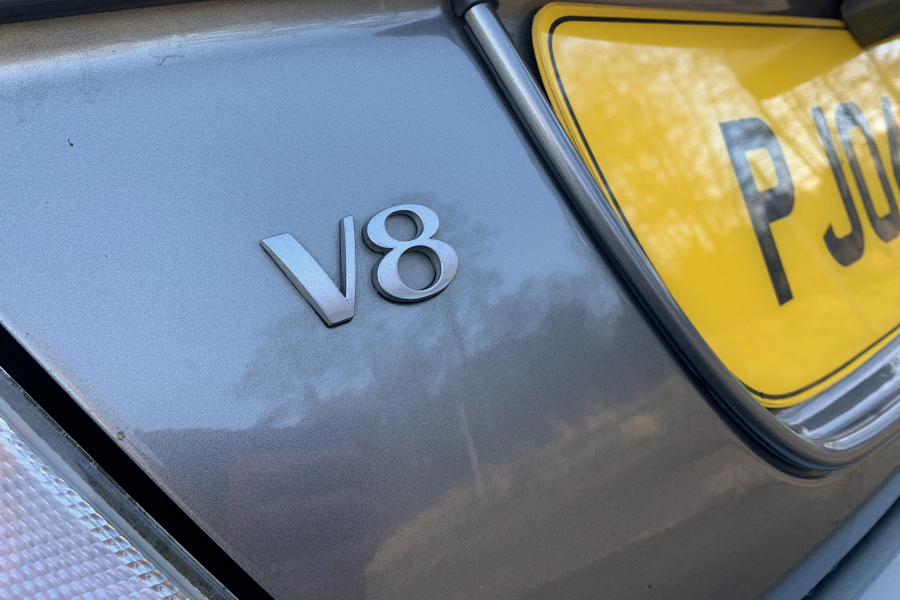
The engine itself was low-key compared to Rover’s homegrown K-Series. Familiar from the Mustang, its single-cam, two-valves-per-cylinder layout resulted in just 260bhp from its 4.6 litres, although the 302lb ft torque made up for this. The Ford V8 added 200kg to the MG, which gave it a power-to-weight ratio broadly on a par with the BMW 330i and the ability to sprint to 60mph in 6.2 seconds despite having no traction control.
In the flesh, the ZT 260 is in its own way as low-key as the Lancia. Yes, the Peter Stevens restyle which turned the Rover 75 into an MG created a shouty kind of style at odds with the conservative Rover, but the surprise is that the V8-engined car looks much the same as the regular 1.8 turbo despite the changes under the skin.
Stepping into the MG’s cabin, the gulf between the two cars is immediately obvious from the solidity of the handles to the heft of the door and the general quality of the fittings. This is after all 21st century BMW rather than late-1980s Fiat Group.
The Ford engine is also altogether more shouty than the repurposed Ferrari motor, further enhanced on this car by an aftermarket stainless exhaust. There’s a muscle car overtone to the exhaust note, more TVR than BMW and all the better for it. This was no understated executive express but a left-field choice for buyers who could remember the SD1 Vitesse and who wanted to make a stand against the proliferation of German prestige in company car parks across the land.
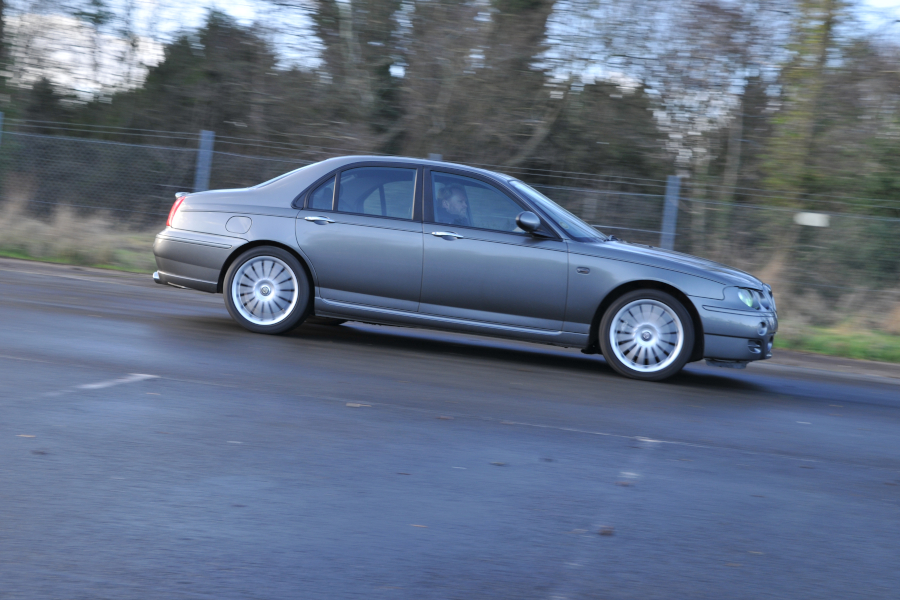
Peer under the rear and some of the engineering seems a little odd – particularly the single damper between differential and subframe to deal with axle tramp – but there’s no arguing with the balanced handling the MG offered. Press material from MG back in the day pointed out that great effort went into making the transition into oversteer as smooth as possible, while the spring rates were kept similar to the four-cylinder ZT 190 to preserve ride comfort. “One of the best handling saloons we have recently encountered,” reckoned Autocar back in 2004, which is praise indeed.
Compared to the laid-back demeanour of the Thema, the MG is a lairy hot rod with the ability to oversteer on command and a feisty character totally different from something like a 3 Series. Yes, it could have done with some further finessing as a package but when you consider its origins, it’s a very credible piece of work. Unsurprisingly, it also goes a lot harder than the Lancia too.
Lancia Thema 8.32 vs Rover ZT 260: our verdict
And which of these V8 rarities would get my ten grand? There’s no contest: it’s the Lancia Thema 8.32 every time for me, thanks to its rarity and of course that Ferrari connection. But of course a more sensible person would be drawn to the MG, which will be that little bit easier to own: parts support remains excellent both for the MG ZT and the Mustang engine. But only one of these cars has a spoiler which motors out of the bootlid.
Both of these cars will offered for sale at Brightwells’ next auction on February 14, 2024. Click here for more information






